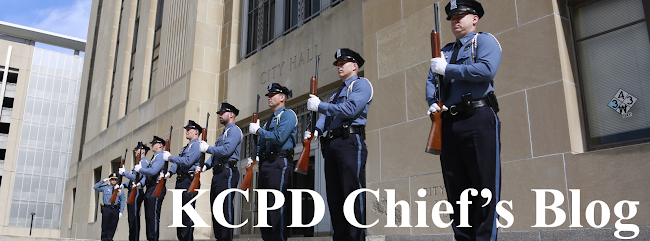Few people in Kansas City have as much day-to-day interaction with those experiencing mental illness or substance abuse crises as the members of KCPD. That’s why we have worked diligently for years now to prepare and equip our staff to safely interact with those in crisis, get them to the resources they need and, if possible, keep them out of the criminal justice system.
In the early 2010s, we
realized how important it was, so we created a squad of Crisis Intervention
Team (CIT) officers dedicated to serving and following up with members of our
community with mental illness who came to the attention of law enforcement.
They work hand-in-hand with community mental health liaisons (social workers
from mental health treatment providers). In 2020 – even among COVID
restrictions - this squad responded to 675 calls for service involving those
with mental illness. They conducted 464 follow-up visits in addition to that.
They contacted homeless individuals 449 times to help them get treatment and
housing.
They also conducted extensive
mental health awareness and de-escalation training for our KCPD officers and
other area law enforcement, as well as community and panel presentations.
Thanks to our CIT squad and social workers, thousands of
members of our community got the help they really needed instead of being thrown
into the criminal justice system or having a negative encounter with law
enforcement.
This squad also was integral to the creation of the Kansas
City Assessment and Triage Center (KC-ATC) in the 2600 block of E. 12th
Street. It opened in 2016. It’s a public-private partnership between the
KCPD, City of Kansas City, Missouri Department of Mental Health and seven
Kansas City hospitals. It only accepts patients from police or hospital
emergency rooms, and patients must agree to go voluntarily. Before KC-ATC, emergency
rooms used to be the only option for police to take those in mental health or
substance abuse crisis. Patients often were sent on their way with a prescription
for medication and a referral to a mental health care provider. The onus was on
the patient to arrange for their own follow-up care, which many were not in the
correct mental state to do. At KC-ATC, case workers ensure patients are
assigned to their nearest mental health care provider, and that care provider
is charged with following up with the patient.
It’s
not enough to have just one squad of CIT officers, though. While about 40% of
our department’s officers were CIT-certified, having taken the full 40-hour
course, I felt every single officer needed to know the basics. Now every sworn
KCPD member must take a 2.5-day Introduction to CIT course. Given their frequent encounters
with those in mental health crisis, this is a benefit to both them and the
community. We developed this course in collaboration with CIT International, a not-for-profit organization established in 2006 that is the leader in
promoting safe and humane response to those experiencing a mental health
crisis. One of our own, Major Darren Ivey, serves on its executive committee.
They promote community collaboration using the Crisis Intervention Team (CIT)
Program to assist people living with mental illness and/or addiction who are in
crisis.
CIT International is governed
by a Board of Directors who come from all aspects of the CIT community: law
enforcement, behavioral health, family/advocates, and persons with lived
experiences. It’s led by an executive director.
In addition to the Intro to CIT and basic CIT courses, our 911 call-takers and dispatchers also take extensive CIT training. Many of our staff members also have taken CIT courses specific to certain populations such as veterans and youth.
Our department social service workers also have stepped in
to assist. They have helped many Kansas City residents in crisis get the
resources they need for housing, food, and more. As I stated in a previous blog, police working with social service workers is one of the most safe and
effective ways to address ongoing issues in our community that have come to the
attention of law enforcement.
Much of our work with those who are in mental illness or
substance abuse crisis involves de-escalation. So many facets of our training
incorporate de-escalation, and we were one of the leaders in developing it in
the mid-2010s. A large portion of our annual firearms
training is devoted to preventing use of force encounters. Both our recruit
Academy and annual in-service training include both specific de-escalation
techniques and how they can be used in a variety of situations, from domestic
violence to mental health crises to serving warrants.
As policing evolves, KCPD continues to seek nontraditional responses. Public-private partnerships, social services and de-escalation are all examples of the commitment this Department has to our city.
Send comments to kcpdchiefblog@kcpd.org.

